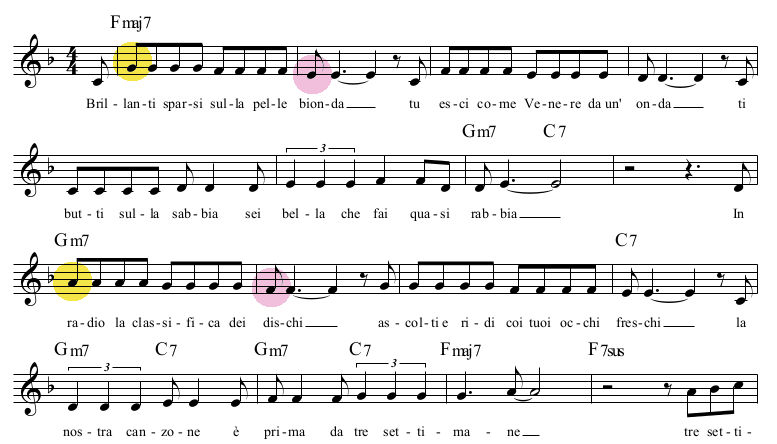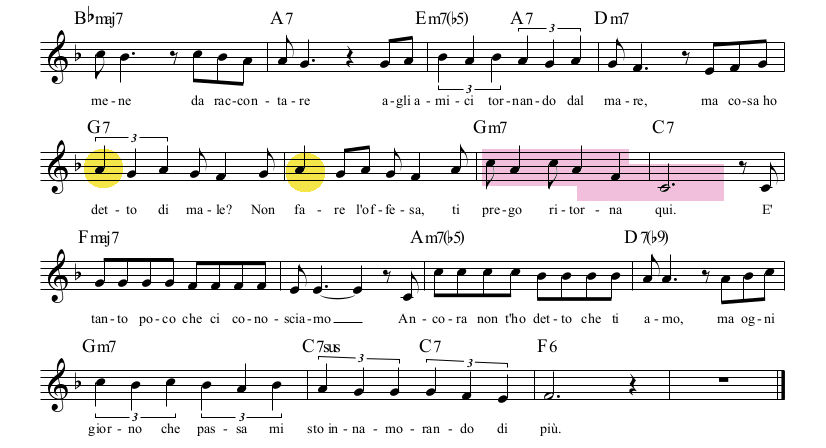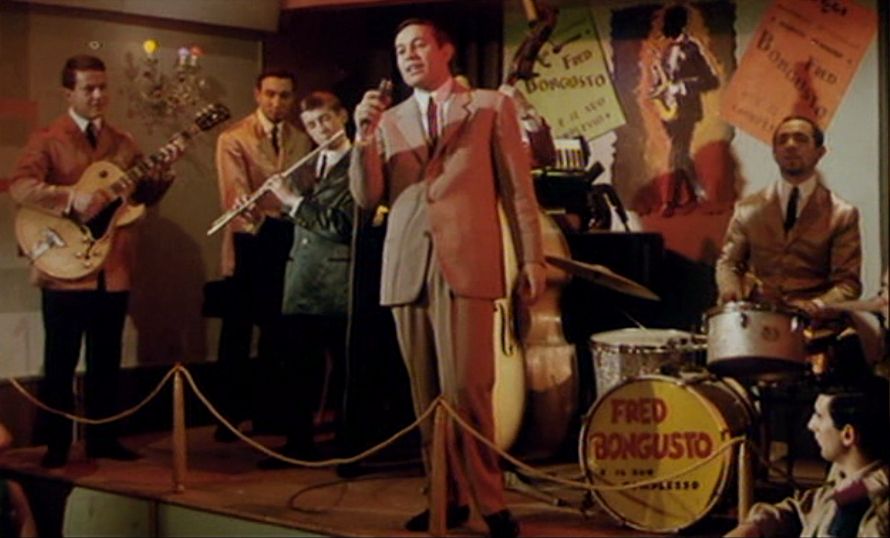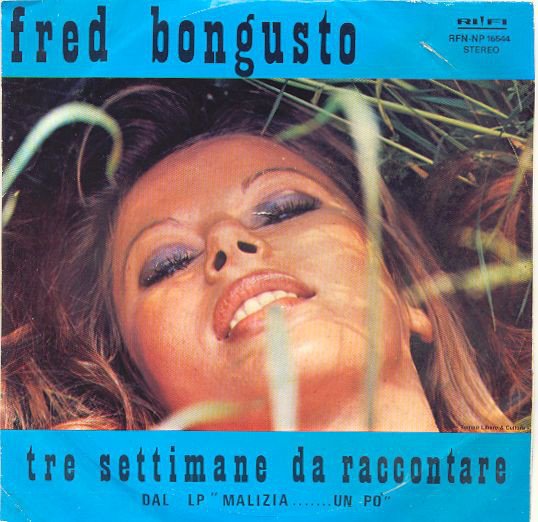[Monday Notes no. 132] Tre settimane da raccontare is a song by Alberto Testa and Walter Malgoni, performed by Fred Bongusto. This song has all the characteristics of the great ‘Italian song’. In particular, we will see what it has in common with so much Italian music of the 1960s and 1970s.
Pur ispirandosi spesso al repertorio americano, la canzone d’autore italiana presenta alcune particolari caratteristiche:
- The harmony is very simple and often lingers on the I degree of the key. Also typical is the modulation to the IV degree in the second part of the piece
- The melodic line is predominantly diatonic, simple and singable
- The text often speaks of love, usually in a very light or even naive mood
It is not hard to imagine that such stereotypical characteristics could produce predictable and even banal music, yet there is one quality that saves these songs from such a risk: elegance.
Some songs that fully or partially respect this pattern are Grande grande by Carlo Alberto Rossi, performed by Mina; Quando quando quando written and sung by Tony Renis; 4/3/1943 by Lucio Dalla; Un giorno dopo l’altro by Luigi Tenco.
Another characteristic that is hardly noticeable but contributes to the elegance and success of these songs is the perfect metrics of the lyrics, which fit the melody without blunders.
Returning to Fred Bongusto’s piece, we notice a rather sophisticated relationship between melody and harmony. In this, the song is somewhat similar to the repertoire of American jazz standards. In fact, the melodic line touches interesting chord notes, let us look at the first part of Tre settimane da raccontare.
On the first chord Fmaj7 the melody starts from the 9th of the chord (in yellow) and reaches the major 7th (in pink). The same happens at the beginning of the third line on the Gm7 chord. In the second part the song modulates, as usual, on the IV degree (in this case, Bbmaj7).

The melody continues to move diatonically, i.e. between adjacent notes. It then touches 9th, this time on a dominant chord: note A on G7, highlighted in yellow in the second staff. Finally, the theme reaches the highest note, C, from which it descends with a delightful arpeggio, highlighted in pink in the score.

To the elegance of the music is added that of the performer. Fred Bongusto is the classic confidential singer, in America they used to call them crooners. Those who love Frank Sinatra cannot help but recognise his imprint in Bongusto’s style, not only in the way he sings but even in the way he holds the microphone.

Those looking for originality and daring solutions in this song will certainly be disappointed. Even the lyrics are predictable and reflect a somewhat pudic sensibility that belongs to generations long gone.
So I greet my ‘Monday Notes’ friends with a beach song, but one that comes from a beach of fifty years ago. A song that certainly makes us smile, and if we are in the right mood, perhaps it can even make us dream.
Until next Monday!
Download the leadsheet of Tre settimane da raccontare


